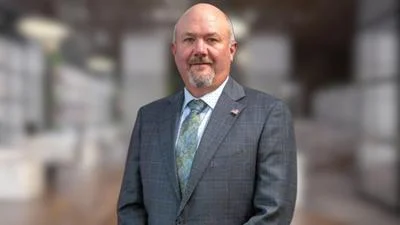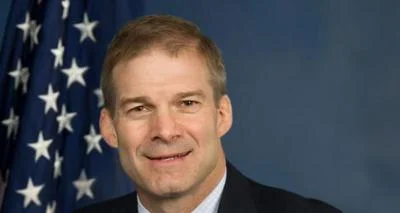The Congressional Record is a unique source of public documentation. It started in 1873, documenting nearly all the major and minor policies being discussed and debated.
“DEPARTMENT OF TRANSPORTATION AND RELATED AGENCIES APPROPRIATIONS ACT, 1996.” mentioning the U.S. Dept. of Transportation was published in the Senate section on pages S16369-S16370 on Oct. 31, 1995.
The publication is reproduced in full below:
DEPARTMENT OF TRANSPORTATION AND RELATED AGENCIES APPROPRIATIONS ACT,
1996.
The Senate continued with the consideration of the bill.
Mr. KERRY. Madam President, I rise today in support of the conference report on the Transportation appropriations bill. I would just like to take a moment to acknowledge the exceptional work of Senator Lautenberg and Senator Hatfield in developing this compromise approach that is now on the floor.
This is a critical time for our public infrastructure investments. There are many of us here in the Senate who are deeply disturbed by the level of reduction on the investment side of the ledger, not just in public infrastructure, but in human beings. I am convinced we will pay a price for that. But measured against the overall choices that we are making in the Senate right now, this transportation bill, I think, has done its best, and Senators Hatfield and Lautenberg have done their best, to strike a balance between transit and passenger rail and highway construction programs.
I would have liked to have seen that balance be a little bit different, but I still am heartened by the fact that they held onto important initiatives and, I might add from a parochial point of view, some important initiatives for New England and for Massachusetts. I commend them for doing that.
I am particularly pleased that the conference report recognizes the significance of multimodal and fixed guideway transportation projects as well as the need to maintain Federal support for Amtrak and the Northeast Corridor Improvement Program. I am concerned that operating subsidies for mass transit are significantly reduced and in some places, particularly in rural or outlying areas, we are going to see reductions that have a dramatic impact on low-income, disabled, and senior citizens' ability to be able to get to work, to get to shopping places, to move around the community. And while it may look OK on the short-term ledger of a budget, those things build community as much as a lot of other things that we care about. When people cannot get somewhere, storeowners lose, community centers lose, and the people lose.
So not having a vibrant transit system is not somehow going to be made up, we know, by the private sector because the bottom line has always been that the private sector cannot make money at it. That is why we have the public transit in the first place.
I must express my serious disappointment in the severe reductions in transit operating assistance that will likely mean a reduction of some
$3 million for Massachusetts.
The conference report reflects the crossroads at which Congress finds itself with Amtrak. Despite the many benefits of passenger rail, some Members do not consider investment in passenger rail an appropriate use of taxpayer dollars. Others--and I count myself among this group--know from previous experience both here and abroad that the capital-
intensive nature of passenger rail makes it unlikely to survive as a viable transportation mode without some form of Government support. Indeed, the U.S. ranks 35th among the nations of the world in per capita spending on passenger rail--behind such countries as Belarus, Botswana, and Guinea. In appropriating $635 million for Amtrak, which is about $160 million less than the fiscal year 1995 funding level, the conferees anticipate enactment of legislation to reform Amtrak. As a member of the Senate Commerce Committee, which has reported legislation to restructure Amtrak so as to place it on a path toward greater fiscal stability and accountability, I pledge to help move this bill forward as soon as possible.
My concern for passenger rail is particularly keen when it comes to the Northeast corridor and the need to move ahead with track work, upgrading maintenance facilities and completion of the electrification of the northern section as soon as possible. This project is vital to reducing congestion in the corridor, which in turn will result in important environmental, energy and employment benefits. The $115 million the conference report provides for NECIP, some $85 million less than in fiscal year 1995, will enable work to move forward, albeit more slowly.
Another area of special importance to Massachusetts is mass transit. I am frankly disappointed and disturbed by the significant reduction in funding agreed to by the conferees for mass transit operating assistance. From $710 million in fiscal year 1995 down to the $400 million contained in the conference report, this severe cut in funding will have a devastating effect on mass transit systems, particularly in the Pioneer Valley, Worcester, Attleboro, and the Lawrence-Haverhill areas. For Pioneer Valley alone, this means a $1 million reduction, or a cut of more than 47 percent in Federal funds. A reduction of this magnitude will most certainly force the transit authorities to curtail service and raise fares, creating significant hardship for those who depend on mass transit--such as the elderly, disabled, and low-income riders--for basic shopping needs, and to commute to work and to school. It is my hope that this sharp downward trend in critical mass transit funding will be reversed next year.
I am grateful to the conferees for including in their report more than $20 million for the south Boston Piers Transitway. The transitway is a critical component of the State implementation plan, and is anticipated to serve 22,000 daily riders. This construction project has stayed on schedule and on budget, and has an impressive cost-
effectiveness index of $9 to $16 per new passenger trip.
Another important project that will receive $2 million through the Federal Transit Administration's bus and bus facilities account in fiscal year 1996 is the Worcester Intermodal Center. The center, in a renovated Union Station in Worcester, MA, will provide convenient access to commuter rail, buses, and taxis to Worcester County's 710,000 residents.
I have heard some concerns expressed about the provisions of the conference report relating to reform of the Federal Aviation Administration, FAA, and particularly to those sections dealing with the rights of workers to organize and bargain collectively. As a member of the authorizing committee that oversees the FAA, I intend to monitor closely the FAA's personnel reform plan to assure that the labor rights of FAA workers are fully protected and will keep the statement of the conference managers to this effect in mind as the Commerce Committee considers legislation to restructure the FAA.
Another area about which I am concerned is funding for the U.S. Coast Guard. The Coast Guard is vital to my State of Massachusetts, with its hundreds of miles of coastline, harsh weather conditions, bustling maritime industry, hearty fishing industry, and thriving recreational boating population.
Indeed, the Coast Guard is vital to the safety and well-being of citizens in every coastal State, and in every State with navigable waters. Today, over 50 percent of the U.S. population lives within the coastal zone, and directly benefits from the services the Coast Guard provides. But, indirectly, the Coast Guard, in the performance of its mission, protects every American. In fact, more than two-thirds of the total budget for the Coast Guard goes to operating expenses to protect public safety and the marine environment, enforce laws and treaties, maintain aids to navigation, prevent illegal drug trafficking and illegal immigration, and preserve defense readiness.
With this high demand for services I am amazed that the Coast Guard would consider reducing its operations but in response to our budget dilemma that is exactly what it is doing. The Coast Guard is in the process of an internal downsizing and streamlining program which in 4 years will reduce its size by 12 percent or 4,000 people, and cut $400 million. However, despite these cost cutting efforts, the funding for the Coast Guard provided by the conference--$2.579 billion for operations and $362 million for acquisition, construction and improvements--is well below the President's requests of $2.618 billion for operations and $428 million for acquisition, construction, and improvements.
The Coast Guard has always been able to do more with less, but I am concerned that this level of funding will be inadequate for the Coast Guard to continue successfully to perform important missions and operations. In addition, the conference report contains contradictory provisions concerning funding--the first provision, which I fully endorse, assumes that additional funding of $300 million will be provided in the Department of Defense Appropriations Act for Coast Guard operations. The second provision, which I oppose, makes available at the discretion of the Secretary of Transportation the transfer of up to $60 million to the FAA budget. I do not think setting up agencies within a Department to battle one another for funding is a wise course.
I am pleased to see that the conference agreement disallowed the closure of any Coast Guard multimission small boat stations for fiscal year 1996. While I recognize the necessity of the Coast Guard's streamlining efforts, I am worried that efforts to downsize field operations may unreasonably increase the threat to life, property, and the environment. I concur with the views expressed in the Senate Appropriations Committee report that cited the very real though intangible deterrence benefits of these stations. Combined with their direct benefits, I believe these outweigh the value of the management efficiencies and small budgetary savings that may result from their closure. I also agree with the conference report which stated that the Coast Guard's station closure methodology failed to fairly consider distinctions among small boat stations, such as water temperature and survival time. I have proposed provisions in the Coast Guard authorization bill that establish a more formal process for station closures and require the Coast Guard to take the appropriators' concerns into consideration while allowing the Coast Guard the flexibility to modify the levels of its resources as it sees fit.
Once again, I compliment and thank the Senators from Oregon and New Jersey for their leadership in developing this important legislation. While I would have liked for it to do more in some areas, it is a commendable attempt to meet our Nation's transportation needs within the budget limits allotted to them.
I would just like to finally publicly say I am deeply concerned, also, about the reductions in the Coast Guard. I know that the Coast Guard has accepted the Presidential directive and other directives to streamline and to reduce. Those reductions and that streamlining are good, and it is important. But I am convinced that measured against the extraordinary increase in Coast Guard duties and responsibilities, we are asking them to do more than may be possible.
More than two-thirds of the total budget for the Coast Guard goes to operating expenses for public safety--the marine environment, to enforce laws and treaties, to maintain aids to navigation, to prevent illegal drug trafficking and illegal navigation, immigration, and also to preserve defense readiness. If you look at the increase in responsibility measured against the last 10 years of reduction in resources, once again I think we have to be very careful that we are not shortchanging ourselves.
Madam President, I yield the floor. I thank the Chair.
Mr. WELLSTONE addressed the Chair.
The PRESIDING OFFICER. The Senator from Minnesota.
____________________








